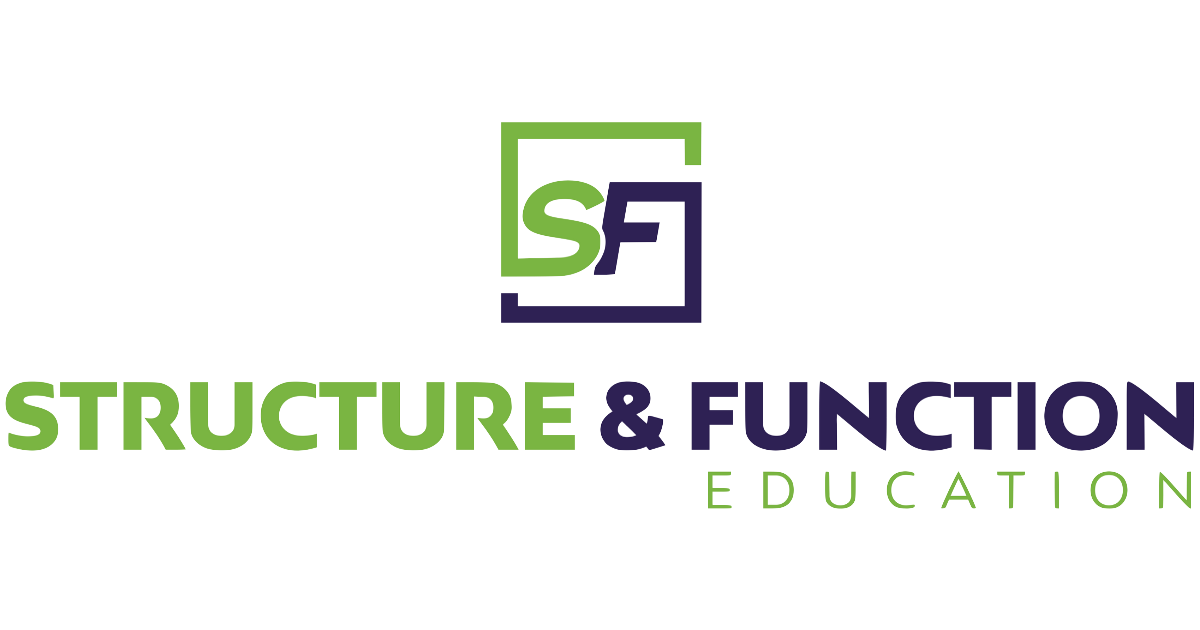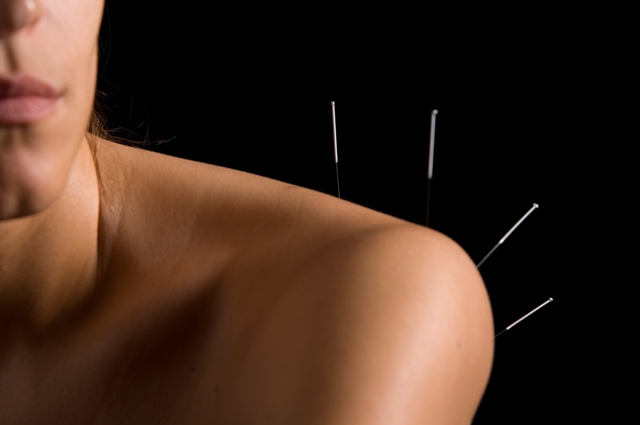How Dry Needling Can Unlock Relief For Chronic Pain
Recognizing Chronic Pain
Millions of individuals worldwide suffer from a complex ailment known as chronic pain, which has a significant negative influence on their quality of life.1-2 Chronic pain is a heavy load that can range from fibromyalgia to back pain and frequently prompts people to look for efficient alleviation. Many patients wanting relief for chronic pain still look for complementary therapies that address the underlying source of their pain, even if conventional treatments like medicine and physical therapy have certain advantages. Dry needling has become a viable method in recent years, offering specific pain alleviation to individuals with chronic pain.3-7 We’ll examine the causes underlying chronic pain in this blog post and how dry needling may be an effective therapeutic strategy.
Understanding Chronic Pain
It’s important to understand the complexities of chronic pain before diving into the role of dry needling. Acute pain acts as a warning signal for injury or tissue damage; however, chronic pain lasts long after the primary injury has healed. It involves complex interactions between the musculoskeletal, neurological, and psychological systems, leading to a painful cycle that may be difficult to escape.8-12
Myofascial pain, with or without trigger points, is a common cause of chronic pain.13 Trigger points, which are extremely sensitive areas inside tense bands of muscle fibers, is a significant contributing factor to chronic pain. These trigger points may result in both localized and referred pain, which can cause generalized discomfort and dysfunction.14-15 Furthermore, abnormal pain processing in the central nervous system, which intensifies feelings and feeds the cycle of pain, is frequently linked to chronic pain.16-21
The Role of Dry Needling: Physiological Mechanisms
Physical therapists utilize dry needling to treat chronic pain. The effects of dry needling lend themselves to managing chronic pain and the conditions underlying the pain. This is due to the effectiveness of dry needling in treating chronic pain, which lies in its ability to modulate various physiological processes within the body. Research has shown that dry needling can have a variety of effects on different levels:22-25
- Local Effects:
- Neuromuscular effects: Inserting the needles into trigger points can help release muscle tension, reducing localized pain.
- Increased Blood Flow: The insertion of needles can stimulate local blood circulation, which may aid in tissue healing and reduce inflammation.
- Muscle Relaxation: By targeting tight bands of muscle tissue, dry needling can help relax the muscles, improve flexibility, and restore normal movement patterns.
- Release of Trigger Points: Dry needling can deactivate trigger points, which are hyperirritable spots in the muscle associated with pain and dysfunction.
- Neurological Modulation: Dry needling can affect the nervous system locally, altering the transmission of pain signals from the muscle to the central nervous system.
- Segmental Effects:
- Segmental Pain Relief: Dry needling can relieve segmental pain by targeting specific muscle groups or areas, particularly in areas with referred pain patterns.
- Modulate neurotransmitters in the dorsal horn of the spinal cord: Dry needling influences the activation of descending pain mechanisms through endogenous opioid, monoamine, and endocannabinoid systems. This modulation helps regulate pain perception and reduce hypersensitivity in chronic pain conditions.
- Systemic Effects:
- Pain Modulation: Dry needling can stimulate the release of endogenous opioids and other neurotransmitters, modulating pain perception throughout the body.
- Neuroendocrine Response: The insertion of needles can trigger a neuroendocrine response, leading to the release of hormones such as endorphins and cortisol, which can have systemic effects on pain modulation and stress reduction.
- Autonomic Effects: Dry needling may influence the autonomic nervous system, leading to changes in heart rate, blood pressure, and other physiological parameters.
It’s important to note that the effects of dry needling can vary from person to person, and its efficacy depends on various factors, such as the individual’s condition, the practitioner’s skill, and the specific technique used. Additionally, dry needling is often part of a comprehensive treatment plan that may include other interventions such as exercise, manual therapy, and education.
Why Dry Needling Works for Chronic Pain
Dry needling offers several advantages as a treatment modality for chronic pain:
- Targeted Relief: Unlike oral medications that may have systemic effects, dry needling allows for precise targeting of trigger points, addressing the source of pain directly.
- Minimally Invasive: Dry needling involves the insertion of thin needles into the skin, making it a minimally invasive procedure with minimal risk of complications.
- Adjunct to Comprehensive Treatment: Dry needling is often used in conjunction with other therapies, such as physical therapy exercises, manual therapy techniques, and lifestyle modifications, to provide comprehensive pain management.
- Tailored Approach: Each dry needling session can be customized based on the individual’s specific pain patterns and needs, ensuring personalized care and optimized outcomes.
Conclusion
Chronic pain is a multifaceted condition that requires a holistic approach to management. While there is no one-size-fits-all solution, dry needling has emerged as a valuable tool in the treatment of chronic pain, offering targeted relief and addressing underlying muscular dysfunction. By understanding the physiological mechanisms at play and incorporating dry needling into a comprehensive treatment plan, patients can take significant steps toward reclaiming their lives from the grip of chronic pain. As research continues to shed light on its efficacy and safety, dry needling holds promise as a cornerstone of modern pain management practices, providing hope and healing for those living with chronic pain.
If you’re interested in learning how Structure & Function Education’s Pentamodal Method of dry needling can help you learn to manage your patient’s pain, enroll today in Foundations of Dry Needling for Orthopedic Rehab & Sports Performance at structureandfunction.net. Or, if you have already taken SFDN1, join us at Advanced Dry Needling for Orthopedic Rehab & Sports Performance course (SFDN2) to further your education in this complex area. Check out structureandfunction.net for further information.
References
- Hadi MA, McHugh GA, Closs SJ. Impact of Chronic Pain on Patients’ Quality of Life: A Comparative Mixed-Methods Study. J Patient Exp. 2019 Jun;6(2):133-141. doi: 10.1177/2374373518786013. Epub 2018 Jul 5. PMID: 31218259; PMCID: PMC6558939.
- Phillips, Ceri J. “The Cost and Burden of Chronic Pain.” Reviews in Pain 3, no. 1 (June 2009): 2–5. https://doi.org/10.1177/204946370900300102.
- Paley and Johnson. “Acupuncture for the Relief of Chronic Pain: A Synthesis of Systematic Reviews.” Medicina 56, no. 1 (December 24, 2019): 6. https://doi.org/10.3390/medicina56010006.
- Shah, Jay P. “Integrating Dry Needling with New Concepts of Myofascial Pain, Muscle Physiology, and Sensitization.” In Integrative Pain Medicine, edited by Joseph F. Audette and Allison Bailey, 107–21. Totowa, NJ: Humana Press, 2008. https://doi.org/10.10
- Vickers, Andrew J., Emily A. Vertosick, George Lewith, Hugh MacPherson, Nadine E. Foster, Karen J. Sherman, Dominik Irnich, Claudia M. Witt, and Klaus Linde. “Acupuncture for Chronic Pain: Update of an Individual Patient Data Meta-Analysis.” The Journal o
- Loizidis, Theodoros, Thomas Nikodelis, El. Bakas, and I. Kollias. “The Effects of Dry Needling on Pain Relief and Functional Balance in Patients with Sub-Chronic Low Back Pain.” Journal of Back and Musculoskeletal Rehabilitation, April 10, 2020, 1–7. http
- Rodríguez-Huguet, Manuel, Maria Jesus Vinolo-Gil, and Jorge Góngora-Rodríguez. “Dry Needling in Physical Therapy Treatment of Chronic Neck Pain: Systematic Review.” Journal of Clinical Medicine 11, no. 9 (April 23, 2022): 2370. https://doi.org/10.3390/jcm
- Schabrun, Siobhan M., Edith L. Elgueta-Cancino, and Paul W. Hodges. “Smudging of the Motor Cortex Is Related to the Severity of Low Back Pain.” Spine 42, no. 15 (August 1, 2017): 1172–78. https://doi.org/10.1097/BRS.0000000000000938.
- Ossipov, Michael H., Kozo Morimura, and Frank Porreca. “Descending Pain Modulation and Chronification of Pain.” Current Opinion in Supportive and Palliative Care 8, no. 2 (June 2014): 143–51. https://doi.org/10.1097/SPC.0000000000000055.
- Millan, M. J. “The Induction of Pain: An Integrative Review.” Progress in Neurobiology 57, no. 1 (January 1999): 1–164.
- Latremoliere, Alban, and Clifford J. Woolf. “Central Sensitization: A Generator of Pain Hypersensitivity by Central Neural Plasticity.” The Journal of Pain 10, no. 9 (September 2009): 895–926. https://doi.org/10.1016/j.jpain.2009.06.012.
- Garland, Eric L. “Pain Processing in the Human Nervous System.” Primary Care: Clinics in Office Practice 39, no. 3 (September 2012): 561–71. https://doi.org/10.1016/j.pop.2012.06.013.
- Yehoshua, Ilan, Oded Rimon, Miri Mizrahi Reuveni, Roni Peleg, and Limor Adler. “Dry Needling for the Treatment of Acute Myofascial Pain Syndrome in General Practitioners’ Clinics: A Cohort Study.” BMC Primary Care 23 (December 27, 2022): 339. https://doi.
- Dommerholt, Jan. “Dry Needling — Peripheral and Central Considerations.” Journal of Manual & Manipulative Therapy 19, no. 4 (November 2011): 223–27. https://doi.org/10.1179/106698111X13129729552065.
- Dommerholt, Jan, Jacob N. Thorp, Todd Hooks, and Orlando Mayoral. “A Critical Overview of the Current Myofascial Pain Literature – October 2020.” Journal of Bodywork and Movement Therapies 24, no. 4 (October 2020): 468–78. https://doi.org/10.1016/j.jbmt.2
- Steeds, Charlotte E. “The Anatomy and Physiology of Pain.” Surgery (Oxford) 31, no. 2 (February 2013): 49–53. https://doi.org/10.1016/j.mpsur.2012.11.005.
- Moayedi, Massieh, and Karen D. Davis. “Theories of Pain: From Specificity to Gate Control.” Journal of Neurophysiology 109, no. 1 (January 2013): 5–12. https://doi.org/10.1152/jn.00457.2012.
- Mense, Siegfried. “Muscle Pain: Mechanisms and Clinical Significance.” Deutsches Ärzteblatt International 105, no. 12 (March 2008): 214–19. https://doi.org/10.3238/artzebl.2008.0214.
- Mense, Siegfried. “The Pathogenesis of Muscle Pain.” Current Pain and Headache Reports 7, no. 6 (November 2003): 419–25. https://doi.org/10.1007/s11916-003-0057-6.
- Mense, S., D.g. Simons, and I.j. Russell. Muscle Pain: Understanding Its Nature, Diagnosis, and Treatment. Philadelphia, Pa.; Lippincott Williams & Wilkins, 2001.
- McMahon, S. B. Wall and Melzack’s Textbook of Pain. [Electronic Resource]. 6th ed. Elsevier/Saunders, 2013.
- Butts, Raymond, and James Dunning. “Peripheral and Spinal Mechanisms of Pain and Dry Needling Mediated Analgesia: A Clinical Resource Guide for Health Care Professionals.” International Journal of Physical Medicine & Rehabilitation 04, no. 02 (2016). http
- Cao, Jin, Yiheng Tu, Scott P. Orr, Georgia BS Wilson, and Jian MD Kong. “Modulatory Effects of Actual and Imagined Acupuncture on the Functional Connectivity of the Periaqueductal Grey and Ventral Tegmental Area.” Psychosomatic Medicine, n.d. https://doi.
- Shah, Jay P. “Integrating Dry Needling with New Concepts of Myofascial Pain, Muscle Physiology, and Sensitization.” In Integrative Pain Medicine, edited by Joseph F. Audette and Allison Bailey, 107–21. Totowa, NJ: Humana Press, 2008. https://doi.org/10.10
- Vieira, Cintia, Daiana C. Salm, Verônica V. Horewicz, Daniela D. Ludtke, Aline A. Emer, Júlia F. Koerich, Gustavo Mazzardo, et al. “Electroacupuncture Decreases Inflammatory Pain through a Pro-Resolving Mechanism Involving the Peripheral Annexin A1-Formyl





